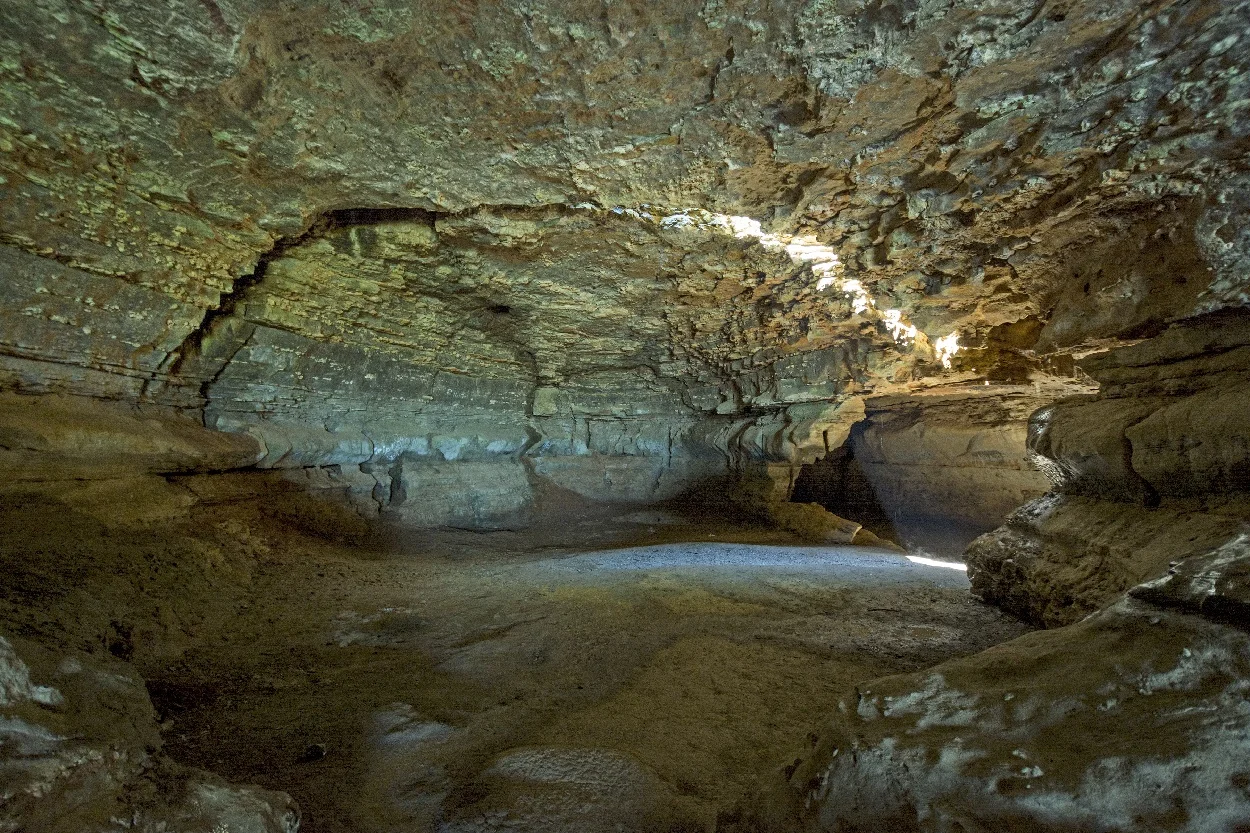Cave-In-Rock, also known as Murrell’s Cave and Potato Cave, is a 17-metre-wide riverside cave located in the town of Cave-in-Rock, State of Illinois, United States.
The cave was formed by wind and water erosion of the limestone bluffs on the Ohio River, caused by glacial meltwater following the Wisconsin Glacial Episode 75,000 to 11,000 years ago.
The first European to document the cave was M. de Lery of France, who in 1729 mapped and named it “caverne dans Le Roc”.
In the latter part of the 18th century, the Ohio River became infamous for river piracy, with Cave-In-Rock earning a reputation as the reported hideout of pirate gangs, highwayman and brigands.
River pirates along the Ohio River operated in isolated frontier settlements, which were sparsely populated areas lacking the protection of civil authority and institutions. They used techniques of deception, concealment, ambush, and assaults in open combat near natural obstacles and curiosities.
The cave became associated with Samuel Ross Mason, a former Virginia militia captain on the American western frontier during the American Revolutionary War. Mason was the leader of the Mason Gang, a criminal group of river pirates and highwaymen who raided boats on the lower Ohio River and the Mississippi River.

In the 1790’s, Mason moved to the Red Banks on the Ohio River (present-day Henderson, Kentucky), and supposedly ran his operation from Cave-In-Rock. His gang included notorious figures such as the Harpe Brothers, allegedly America’s first serial killers, and Peter Alston, a counterfeiter, horse thief and highwayman.
Newspapers ran wild with the story of Samuel Mason and his gang, building up Cave-In-Rock’s reputation as a den of piracy and bandits.
The gang continued to operate from the cave until 1799, until they were expelled by a group of vigilantes led by Captain Young of Mercer County.
Mason was eventually captured along with his men by the Spanish colonial government in New Madrid and were transported to the custody of the American authorities in the Mississippi Territory. While en route for the handover, Mason and his men overpowered the guards and escaped, with Mason suffering a bullet wound to his head that was likely fatal.
From the late 1700s to early 1800s, on the Illinois side of the Ohio River north of Cave-In-Rock, Jonathan Brown led a small gang of river pirates at Battery Rock, while according to local lore, the infamous bank and train robber, Jesse James of the James–Younger Gang also hid out in the cave (although there is no historical text to support the association).
By the 19th century, law enforcement and regulator-vigilante groups uprooted and swept out pockets of outlaw resistance. Cave-in-Rock was tamed by settlers who formed the river town of Cave-In-Rock near the cave entrance.
Header Image Credit : Daniel Schwen – CC BY-SA 4.0





